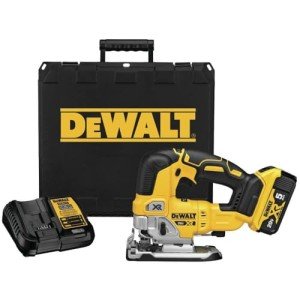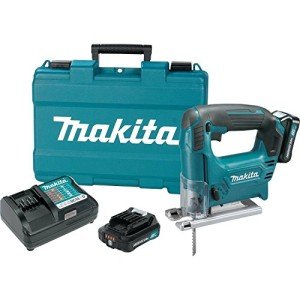5 Laws Anyone Working In Power Tool Sale Should Know
페이지 정보

본문
 Power Tool Sales and Marketing Strategies for B2B Retailers
Power Tool Sales and Marketing Strategies for B2B RetailersPower tools are a staple for both consumer and professional use. Despite an expected slowdown in 2021 due to the COVID-19 pandemic, the demand is still at or near pre-pandemic levels.
 In terms of outlet dollar share, Home Depot leads all power tools outlets in sales of power tool shop tools. Lowe's isn't far behind. However, both are confronting stiff competition from Chinese-made power tools.
In terms of outlet dollar share, Home Depot leads all power tools outlets in sales of power tool shop tools. Lowe's isn't far behind. However, both are confronting stiff competition from Chinese-made power tools.Tip 1: Make a Brand Commitment
A lot of manufacturers of industrial products place emphasis on sales over marketing. This is because the long-term selling process involves a lot of back and forth communication and a thorough understanding of the product. This type of communication is not suitable for emotional marketing strategies.
However, industrial tool manufacturing companies must rethink their marketing strategy. The digital age has outpaced traditional manufacturers who depend on a small group of distributors and retail outlets to sell their products.
Brand loyalty is a major aspect in the sales of power tools. When a buyer is committed to a specific brand, they are less sensitive to competitor's messages. They are also more likely to purchase the client's products again and to recommend them to friends and family.
To have a positive impact to be successful in the United States market, you need to have a well-planned strategy. This means adapting your tools to meet local requirements, positioning your brand in a competitive way, and leveraging marketing channels and distribution channels. It is also important to cooperate with local authorities as well as industry associations and experts. In this way you can be sure that your power tools will conform to the laws of the country and standards.
Tip 2: Be aware of Your Products
In a world where quality of the product is so important, retailers should know the products they offer. This will enable them to make informed decisions about the products they offer their customers. This knowledge can make the difference between making a successful or a bad purchase.
For instance knowing which tool is ideal for specific projects will allow you to match your customer with the right tool to meet their needs. You'll build trust and loyalty among your customers. This will help you feel confident that you are offering a complete service.
Also, knowing the latest trends in DIY culture will help you know what your customers are looking for. As an example the increasing number of homeowners are taking on home renovation projects requiring the use of power tool. This can lead a spike in sales of power tools.
According to Durable IQ, DeWalt leads in power tool unit share at 16%, however Ryobi and Craftsman brands have seen their share decrease year-over-year. However, both online and in-store purchases are on the rise.
Tip 3: Offer Full-Service Repair
The most common reason that a buyer makes a tool purchase is to replace a tool that has been damaged or failed or to embark on a new project. Both offer opportunities for upsells and add-on sales.
According to the Home Improvement Research Institute (HIRI) 2020 Tracking Study of Power Tools and Accessories 35 percent of all purchases for power tools online are the result of planned replacements. These customers often require additional accessories or require an upgrade to better performing models.
If your customer is an experienced DIYer or All Power Tools is new to the hobby, they'll likely require replacement of their power tools' carbon brushes, drive belts and power cords over time. These basic items will ensure that your client gets the most from their investment.
When buying power tools, technicians look at three aspects: the tool's application, the power source and security. These aspects allow technicians to make informed choices when it comes to selecting the appropriate tools for their maintenance and repair tasks. This allows them to optimize the performance of their tools and lower the cost of ownership.
Tip 4: Continue to Keep Up With Technology
For instance, the most recent Power Tools - Fewpal.Com - feature intelligent technology that enhances users' experience and differentiates them from other tools that rely on older battery technology. Wholesalers in B2B who offer and sell these tools can increase sales by focusing on tech-forward contractors and professionals.
Karch's company, which has more than 30 years of experience, and a 12,000 square foot department for tools is a testimony to the importance of staying up-to-date with new technologies. "Manufactures are constantly changing the look of their products," Karch says. "They used to hold their designs for five or 10 years, but now they're changing them every year."
B2B wholesalers must not only adopt the latest technology, but also improve existing models. By incorporating lightweight materials and adjustable handles, wholesalers can reduce fatigue due to long-term use. These features are essential for many contractors working in the field who utilize the tools for a lengthy period of time. The power tools industry is divided into consumer and professional groups which means that the major players are constantly improving their designs and developing new features to appeal to more people.
Tip 5: Create a point of Sale
The ecommerce landscape has changed the market for power tool stores near me tools. The advancements in data collection techniques have allowed business professionals to gain a holistic overview of market trends and help them develop marketing and inventory strategies more efficiently.
Utilizing information from the point of sale (POS) using data from the point of sale (POS), you can track DIY projects your customers undertake when buying power tools and other accessories. Knowing the type of projects your customers are undertaking enables you to offer additional sales and opportunities for upselling. It also allows you to anticipate the requirements of your clients, ensuring that you have the correct products available.
You can also use transaction data to identify trends in the market and adjust production cycles accordingly. For instance, you can make use of this information to track fluctuations in your retail partners' and brand's market share. This will allow you to align your product strategies to consumer preferences. Similarly, you can use POS data to improve inventory levels and reduce the chance of overstocking. It can also be used to assess the effectiveness of promotional campaigns.
Tip 6 Tip 6: Be a good neighbor
Power tools is a profitable complex market that requires significant marketing and sales efforts to remain competitive. In the past, gaining a competitive advantage in this market was accomplished by pricing or positioning products. However, these strategies are no longer effective in today's multichannel environment, where information is easily shared.
Retailers who focus on service are more likely to retain customers and build brand loyalty. Mike Karch, the president of Nue's Hardware and Tools, in Menomonee falls, Wisconsin, runs a 12,000 square-foot power tool section. At first, the department offered a sampling of brands, but as he began to listen to the customers of contractors and found that the majority were loyal to a particular brand.
To win their customers' business, Karch and his team first ask their customers what they'd like to achieve with the tool, then show them the tools they have available. This gives them the confidence to recommend the right tool for the job, and builds trust with the customer. Customers who know their product well are less likely to blame their retailer for a malfunctioning tool on the job.
Tip 7: Make a point of customer service
Power tool retailers are facing a fiercely competitive market. The retailers that are successful in this market tend to be more devoted to a single brand rather than to carry a variety of brands. The amount of space retailers can dedicate to a specific category could influence how many brands they are able to carry.
When customers come in to purchase power tools and require assistance, they usually need help choosing a product. If they're replacing an old one that is broken or tackling an upgrade project clients require expert advice from sales associates.
Mike Karch, president of Nue's Hardware and Tools in Menomonee Falls, Wisconsin, says his sales associates at the store are trained to ask the right questions to make an offer. They start by asking what the customer plans to use the tool according to him. "That's the best way to determine the type of tool they need," he says. Then they ask about the customer's experience with various types of projects and the project.
Tip 8: Create a Point of Warranty
Power tool manufacturers vary greatly in their warranty policies. Some companies offer a complete warranty, whereas others offer a limited warranty or do not cover certain tools. It's important for retailers to be aware of the distinctions before purchasing, as customers will buy tools from firms that provide them with a warranty.
Mike Karch, president of Nue's Hardware and Tools in Menomonee Falls, Wisconsin, has a 12,000 square-foot power tools department as well as an in-house repair shop that handles 50 kinds of tools. He has discovered over time that a lot of his contractor customers are loyal to their brands, which is why he prefers to focus on a limited number of brands rather than trying to offer a wide range of products.
He also appreciates that his employees get one-on-one time with vendors to discuss new products and share feedback. This type of personal interaction is crucial because it helps build trust between the store and its customers. Good relationships with suppliers could even result in discounts for future purchases.
- 이전글Five Killer Quora Answers On Vacuum Mop Cleaner Robot 24.12.19
- 다음글Guide To Power Tool Deals: The Intermediate Guide The Steps To Power Tool Deals 24.12.19
댓글목록
등록된 댓글이 없습니다.